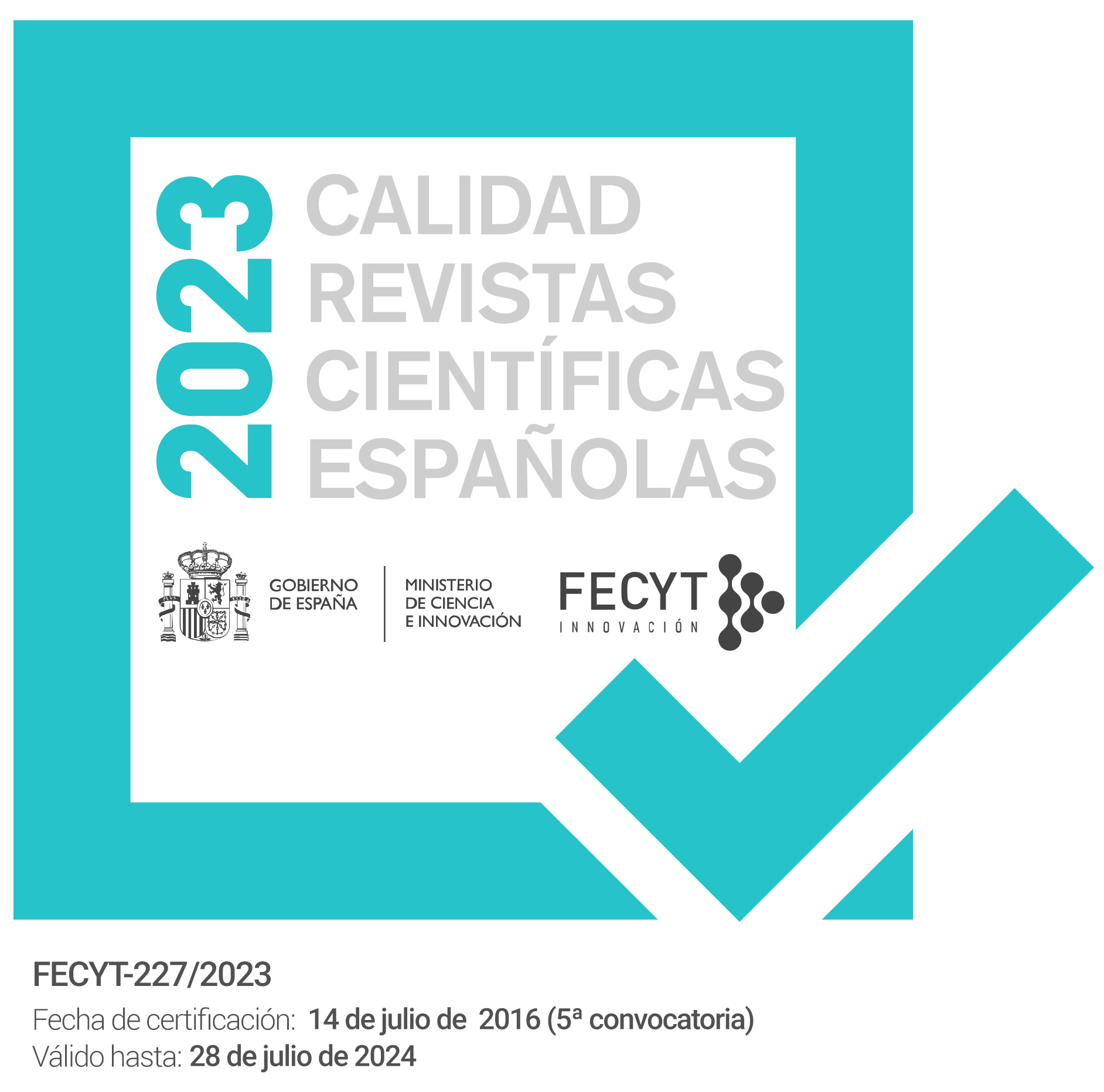Propiedades antidiarreicas de Diospyros peregrina en el modelo de diarrea inducida con aceite de ricino en ratones
Palabras clave:
Diospyros peregrina, Ebenáceas, Diarrea, Disentería, Medicina tradicionalResumen
Diospyros peregrina (Gruke), de la familia de las ebenáceas, posee varias propiedades medicinales y se utiliza enla medicina tradicional de Bangladesh. En este estudio se investigaron los extractos de metanol de la corteza y lassemillas de esta planta en el modelo de diarrea inducida con aceite de ricino en ratones. También se estudiaronlas propiedades antibacterianas de los extractos frente a varias bacterias patógenas causantes de diarrea y disenteríamediante el método de difusión en disco. Con una dosis de 250 y 500 mg/kg de peso corporal, los extractosretrasaron la aparición de la diarrea. Los extractos también redujeron la frecuencia y la gravedad de la diarrea enlos animales de los grupos de prueba durante todo el período de estudio. A igual dosis, los extractos retrasaron eltránsito intestinal del preparado de carbón en los animales del grupo de prueba en comparación con los del grupode control, y los resultados fueron signifi cativos estadísticamente. En ambos casos, el extracto de semilla resultó máspotente que el extracto de corteza. El extracto de corteza inhibió el crecimiento de Staphylococcus aureus, Shigelladysentery, Escherichia coli y Pseudomonas aeruginosa, mientras que el extracto de semilla demostró poseer actividadinhibitoria frente a S. aureus, S. dysentery y E. coli.Descargas
Citas
Phytochemical and Ethnobotanical Databases. USDA, ARS, Beltsville Agricultural Research Center, Beltsville, Maryland,
USA. 2005. Available online at: http://www.ars-grin.gov/duke/
Uddin SJ, Shilpi JA, Alam SMS, Alamgir M, Rahman MT, Sarker SD. Antidiarrhoeal activity of the methanol extract of the barks of Xylocarpus molucensis in castor oil and magnesium sulphate-induced diarrhoea models in mice. 2005; J. Ethnopharmacol. 2005; 101: 139-143.
Kirtikar KR, Basu BD. Indian Medicinal Plants, 2nd edition. 1999; International Book Distributors, Dehradun, India p 1503.
Singh N, Nath R, Gupta ML. A pharmacological evaluation of antistress activity of Diospyros peregrina Gurke. Ind. J. Pharmacol. 1988; 20:102-108.
Ghani A. Medicinal Plants of Bangladesh. 1998; Asiatic Society of Bangladesh, Dhaka, p 164.
Yusuf M, Chowdhury JU, Yahab MA, Begum J. (Medicinal Plants of Bangladesh 1994; BCSIR Laboratories, Bangladesh, p 95.
Joshi SG. Medicinal Plants. 2000; Oxford and IBH Publishing Co Pvt. Ltd India, p173.
Misra PS, Misra G, Nigam SK, Mitra CR. Constituents of Diospyros peregrina fruit and seed. Phytochemistry. 1971; 10: 904-905.
Chauhan JS, Kumari G. Nonadecan-7-ol-2-one an aliphatic ketol from Doiospyros peregrina, Phytochemistry. 1980; 19: 2637-2638.
Jain N, Yadav RN. Peregrinol, a lupane type triterpene from the fruits of Diospyros peregrina. Phytochemistry. 1994; 35: 1070-1072.
Jain N, Yadav RN. Furano-(2’’,3’’,7,8)-3’,5’-dimethoxy-5-hydroxyflavone: A new furanoflavone from the fruits of Diospyros peregrina Gurke. Asian J. Chem. 1997; 9: 442-444.
Chauhan JS, Saraswat M, Kumari G. Structure of a new flavanone glycoside from Doiospyros peregrina roots. Ind. J. Chem. 1982; 21: 169-170.
Shoba FG, Thomas M. Study of antidiarrhoeal activity of four medicinal plants in castor oil induced diarrhoea. Journal of Ethnopharmacol. 2001; 76: 73-76.
Abdullahi AL, Agho MO, Amos S, Gamaniel KS, Watanabe C. Antidiarrhoeal activity of aqueous extract of Terminalia
avicennoides roots. Phytother. Res. 2001; 15: 431-434.
Bauer AW, Kirby WMM, Sherris JC, Truck M. Antibiotic susceptibility testing by a standardized single disk method, The Amer. J. Clin. Pathol. 1966; 45: 493-496.
Cruickshank R. Medical Microbiology, A guide to diagnosis and control of infection. 1968; E. and S. Livingstone Ltd., Edinburgh and London, p 888.
Hardman JG, Limbird LE. Goodman Gillman’s The Pharmacological Basis of Therapeutics, 9th edition. 1996; McGraw-Hill, USA., p 925.
Gaginella TS, Stewart JJ, Olsen WA, Bass P. Action of recinoleic acid and structurally related fatty acid on the gastrointestinal
tract. II. Effect on water and electrolyte absorption in-vitro. Journal of Pharmacology and Experimental Therapeutic. 1975; 195: 355-356.
Ammon HV, Thomas PJ, Phillips S. Effect of the oleic acid and recinolic acid on net jejunal water and electrolyte movement. Journal of Clinical Investigation. 1974; 53: 374-379.
Karim SMM, Adaikan PG. The effect of loperamide on prostaglandin-induced diarrhoea in rat and man. Prostaglandins.
; 13: 321-331.
Couper IM. Opioid action on the intestine: the importance of the intestinal mucosa, Life Sci. 1987; 41: 917-925.
Cotran RS, Kumar V, Robbins SL. Robins Pathologic Basis of Disease. 1994; 5th edition, Prism Books (Pvt) Ltd, India, pp328-335.
Descargas
Publicado
Cómo citar
Número
Sección
Licencia
Los artículos que se publican en esta revista están sujetos a los siguientes términos en relación a los derechos patrimoniales o de explotación:
- Los autores/as conservarán sus derechos de autor y garantizarán a la revista el derecho de primera publicación de su obra, la cual se distribuirá con una licencia Creative Commons BY-NC-SA 4.0 que permite a terceros reutilizar la obra siempre que se indique su autor, se cite la fuente original y no se haga un uso comercial de la misma.
- Los autores/as podrán adoptar otros acuerdos de licencia no exclusiva de distribución de la versión de la obra publicada (p. ej.: depositarla en un archivo telemático institucional o publicarla en un volumen monográfico) siempre que se indique la fuente original de su publicación.
- Se permite y recomienda a los autores/as difundir su obra a través de Internet (p. ej.: en repositorios institucionales o en su página web) antes y durante el proceso de envío, lo cual puede producir intercambios interesantes y aumentar las citas de la obra publicada. (Véase El efecto del acceso abierto).



















